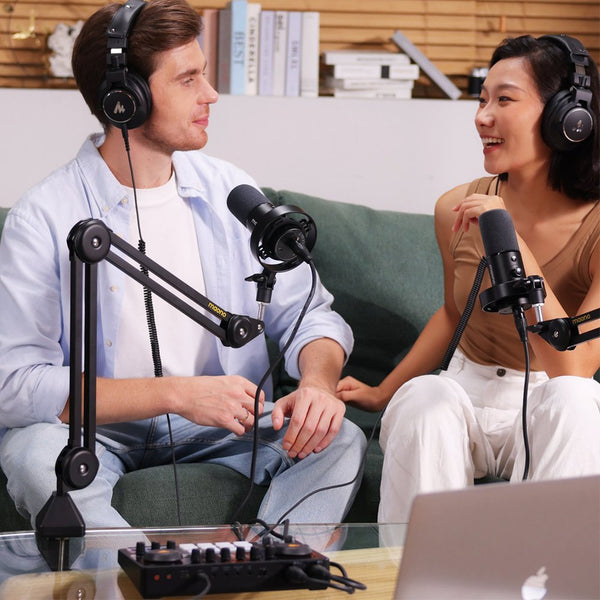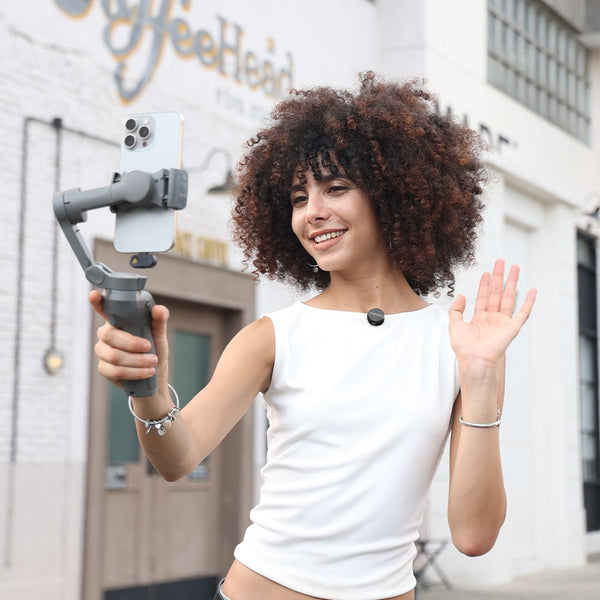When a microphone is versatile, you can use it in different scenarios. For example, you can use the same microphone to record music and to do voice-over work. This flexibility is especially true for those using a studio mic, which is engineered to perform well across various applications.
Why Versatility Matters in Choosing a Microphone
In today’s digital world–it’s fast paced. Content creators, remote professionals, musicians, and live event hosts often juggle multiple roles—and having one microphone that adapts to all those needs is a game changer. A versatile microphone simplifies setups, reduces gear clutter, and saves money. Whether you're hosting a podcast in the morning, recording vocals in the afternoon, or streaming a live event at night, the right mic should perform reliably across all tasks.
What exactly makes a microphone "versatile"? It’s more than just being multi-purpose. A truly versatile mic adapts to various recording environments, supports different connection types, delivers consistent sound quality, and gives you flexibility in pickup patterns and control options. In this guide, we'll explore the key features of studio microphones, how they benefit both beginners and pros, and spotlight the best studio mics for your all-in-one audio needs.
Top Features That Make a Microphone Versatile
A microphone’s versatility is defined by its adaptability across diverse use cases. The most flexible studio mics often include the following features:
-
Multiple polar patterns (cardioid, omnidirectional, bidirectional)
Enables the mic to adapt to solo, group, and interview setups.
-
USB/XLR combo connectivity
Lets users plug directly into a laptop or interface depending on setup needs.
-
Onboard gain control and mute functions
Useful for live control during meetings or performances.
-
Built-in headphone jack
For real-time monitoring
-
Adjustable mic sensitivity and frequency response
Useful for switching between vocals, instruments, and ambient capture.
Some good studio microphones even come with built-in EQ settings, detachable stands, and pop filters to further boost usability across different recording tasks.
How Versatile Mics Save Time and Budget
Buying multiple microphones for different use cases can quickly add up—not just in cost, but also in complexity. A studio mic with versatility eliminates the need for separate devices for podcasts, Zoom calls, music, and streaming. This saves:
-
Money: You invest once instead of buying a mic for every task.
-
Setup time: You don’t need to switch devices or reconfigure settings for every new session.
-
Storage space: Fewer mics = less gear clutter, especially in home studios or mobile kits.
For freelancers, solo content creators, educators, and small business owners, this efficiency is crucial.
Versatile Microphones for Remote Work, Content Creation, and Live Events
Here’s how studio mics meet the demands of various roles:
-
Remote Work
In professional video calls or webinars, clear audio is non-negotiable. A USB mic with plug-and-play functionality ensures reliability and crisp voice delivery.
-
Content Creation
Whether it’s voiceovers, YouTube videos, or podcasting, studio microphones that support multiple polar patterns and gain control offer flexibility without post-editing headaches.
-
Live Events and Performances
Cardioid studio mics with strong off-axis rejection and XLR outputs are crucial in high-noise environments.
Versatile mics bridge all three categories, adapting seamlessly from desktop use to stage setups.
The Role of Polar Patterns in Microphone Flexibility
Polar patterns determine how a studio microphone picks up sound from different directions. Mics with switchable polar patterns are especially versatile. Here’s a breakdown:
-
Cardioid: Picks up sound from the front, ideal for podcasts and solo vocals.
-
Omnidirectional: Captures sound from all directions; useful for group discussions or ambient sounds.
-
Bidirectional (Figure-8): Captures sound from the front and back, ideal for interviews or duets.
-
Stereo: Delivers a wide, immersive sound field for musical instruments or live ambiance.
Being able to toggle between these patterns makes one mic suitable for multiple situations, eliminating the need to own several types.
FAQ Section
What does it mean when a microphone is described as “versatile”?
It means the mic performs well across a variety of applications—like podcasting, live streaming, music recording, video conferencing, and more—often with features like switchable polar patterns, multi-device compatibility, and onboard controls.
Why is microphone versatility important for everyday users?
Because not everyone wants to invest in multiple mics. A good studio microphone simplifies setup, works across platforms, and adapts to your evolving content or work needs.
Can one microphone really handle different recording situations well?
Yes—especially models with USB/XLR support, gain control, and switchable pickup patterns. These features allow one mic to go from quiet home recording to live performance effortlessly.
How do I know if a mic is good for both vocals and instruments?
Check for a wide frequency response (20Hz–20kHz), adjustable gain, and a low self-noise rating. Cardioid or multi-pattern studio microphones are often good vocal mics for studio and excellent for instruments too.
Are USB/XLR combo mics more versatile than standard mics?
Absolutely. These mics let you use USB for quick setups (laptop, mobile) and XLR for pro audio interfaces. You get the best of both worlds in one device.
Can mic sensitivity be adjusted for different environments?
Yes, many studio mics offer adjustable gain or attenuation switches. This helps optimize input levels whether you're in a quiet studio or a noisy venue.
What’s the best mic type for someone doing podcasts, product demos, and Zoom calls?
Look for a USB/XLR cardioid studio microphone like the Maono DM50 or Maono PD400X, which balances plug-and-play simplicity with broadcast-quality sound.
How does mic versatility help when switching between music and spoken word?
A versatile mic can easily handle the dynamic range of instruments and the nuances of voice. With the right settings and polar pattern, transitions between use cases are seamless.
Is there a mic that works for both studio recording and live performance?
Yes. The Maono DM50 and Maono DM40 are designed for both.

USB/XLR dual mode, cardioid pattern, rugged build, excellent vocal clarity—great for both studio use and live vocals.

Also offers USB/XLR, rich sound for instruments and vocals, metal construction, and onboard volume controls. It's perfect for creators who move between environments.
Do I need to spend more for a versatile microphone?
Not necessarily. While some high-end models offer premium features, many good studio microphones are available at affordable prices—especially from brands like Maono.
Will a versatile mic save me money in the long run?
Yes. Instead of buying separate mics for podcasting, Zoom, and music, a single high-quality, adaptable mic can cover all these needs—reducing costs over time.
What are some affordable versatile microphones for beginners?

Offers USB/XLR output, dynamic cardioid pattern, gain knob, mute button, and real-time monitoring. One of the best studio mics for beginners.

USB/XLR connectivity, plug-and-play, studio-quality sound, easy-to-use controls—ideal for remote meetings, live streams, and basic recordings.
Can I use one microphone for both indoor and outdoor recording?
Yes—with proper windshields or pop filters, many dynamic and condenser studio mics can be used outdoors. USB/XLR combo studio microphones with cardioid patterns are especially adaptable.
How does mic versatility affect the total gear I need to buy?
It greatly reduces it. A single good studio microphone that adapts to various uses means fewer stands, fewer adapters, and less post-processing. Your audio kit becomes more streamlined and portable.
Conclusion
In a time when creators and professionals wear many hats, having one microphone that can do it all is no longer a luxury—it’s a necessity. A versatile studio mic streamlines your workflow, enhances sound quality across every format, and stretches your budget further than single-use devices ever could.
Whether you’re recording a podcast, jumping into a Zoom call, filming a product demo, or performing live, studio microphones like the Maono DM50, DM40, PD400X, and PD300X rise to every occasion. With features like USB/XLR dual output, adjustable gain, multi-pattern flexibility, and excellent sound reproduction, these best studio mics help you work smarter, not harder.
Invest in one mic that meets all your needs—and you’ll be ready for whatever the day (or your content calendar) throws at you.
Related Article:
Understanding Different Types of Microphones: Choosing the Right Type of Mic for Your Needs



